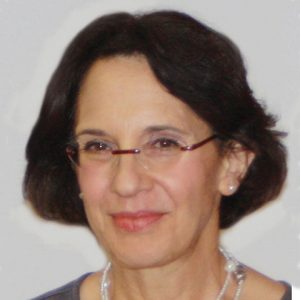 At Iowa State, integrating engineering into K-12 classrooms is a collaborative effort that spans across campus and into surrounding school districts. Trinect, a program funded by the National Science Foundation STEM-C Partnerships, brings together three groups to introduce engineering concepts to young students: engineering graduate students, preservice teacher students and cooperating elementary teachers from Des Moines Public Schools.
At Iowa State, integrating engineering into K-12 classrooms is a collaborative effort that spans across campus and into surrounding school districts. Trinect, a program funded by the National Science Foundation STEM-C Partnerships, brings together three groups to introduce engineering concepts to young students: engineering graduate students, preservice teacher students and cooperating elementary teachers from Des Moines Public Schools.
“Trinect is about sharing knowledge and helping elementary teachers gain confidence in teaching STEM subjects,” says Adah Leshem, pre-college education program director at the National Science Foundation Engineering Research Center for Biorenewable Chemicals located on Iowa State’s campus. Leshem is Trinect’s project co-director and was a driving factor in establishing the program.

“We know there’s a crucial timeframe for engaging young students in STEM fields and there’s often a lack of opportunity for students to experience these subjects. We think Trinect can help fill those gaps.” Each semester, 10 Trinect Fellows, who are engineering graduate students, work with 3rd-5th grade students and their teachers. The fellows help teachers understand the concepts of the engineering design process as well as reaffirm common subjects such as math, science and technology.
“Instead of having graduate fellows teach the concepts, they act as a resource for teachers and students. The approach engages teachers as they develop innovative activities focused on STEM subjects,” Leshem explains.
Kendra Allen, a graduate student in agricultural and biosystems engineering, is a Trinect Fellows this semester. She has been involved with similar programs and thought this would be a great opportunity to make an impact on more students.
A typical day in the classroom for Allen isn’t so typical. “Some days are entirely dedicated to science, some days we only have a few hours, and some days we may only have 30 minutes,” explains Allen. To achieve all the goals of the program, she introduces science concepts first, and then brings in engineering into the classroom. “In science we’re understanding why things happen, and in engineering we’re taking why something happens and applying the science to solve the problem.”
She teaches core concepts such as the water cycle and how certain factors affect water around the world. Allen says aptly communicating subjects to the students can be a challenge as well as gauging the capabilities of students in the classroom. That’s why they are always making tweaks as the program moves along.
Ph.D. candidate in mechanical engineering and Trinect Fellow Jordan Tiarks works alongside Allen. “My goal when engaging students and teachers is to develop lessons that leverage real-world
Raj Raman, a professor in agricultural and biosystems engineering, has been working with Trinect as a co-director. In this role, he serves as a member of the leadership team that oversees Trinect; training of all the engineering Fellows, works with other engineering faculty members to teach engineering content to pre-service teachers and co-teaches the seminar class the engineering fellows take each semester.
“I’m really impressed with the way the engineering fellows simultaneously are improving their own abilities to communicate technical material to lay audiences while at the same time inspiring students to be excited about engineering and science,” says Raman.
Iowa State’s School of Education’s preservice teachers represent the third partner of Trinect. These students are placed in cooperating teacher classrooms for 16 weeks and participate in teaching STEM concepts. At the end of the program, they are better prepared to independently integrate these types of lessons into their own classrooms once they are in the workforce.
Leshem says an external partner will measure the overall effectiveness of Trinect. The data will evaluate how the triad functions as a team and how the approach the program is using compares to traditional learning methods.
“We’ll be continually improving our program as we receive feedback and looking for additional opportunities to expand collaborations,” Leshem says.